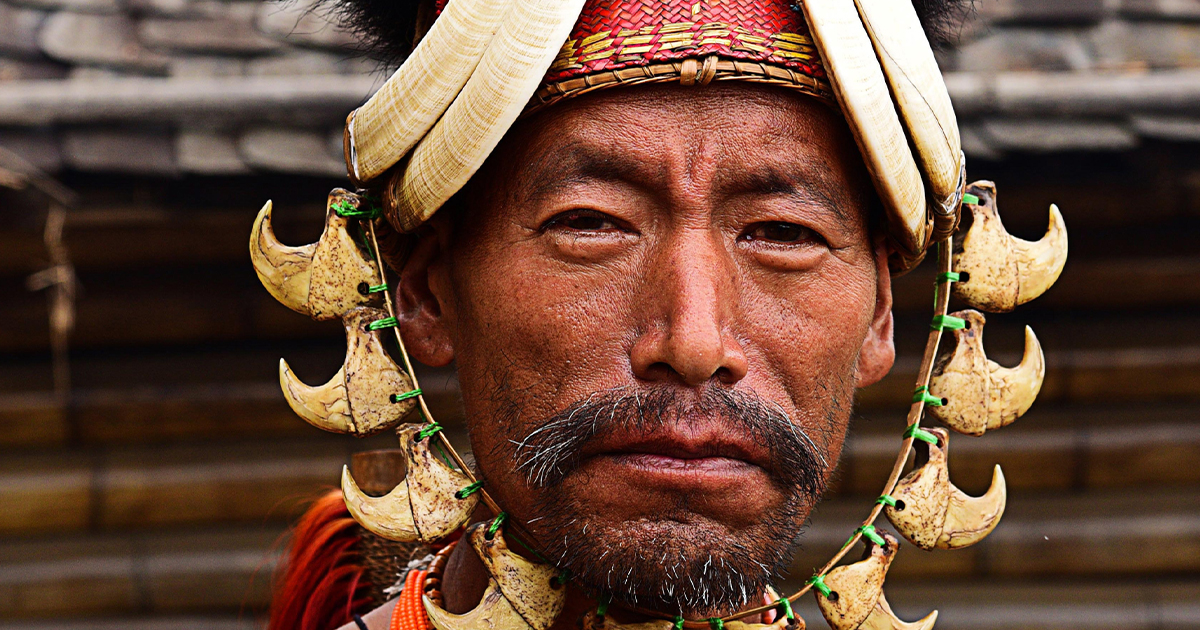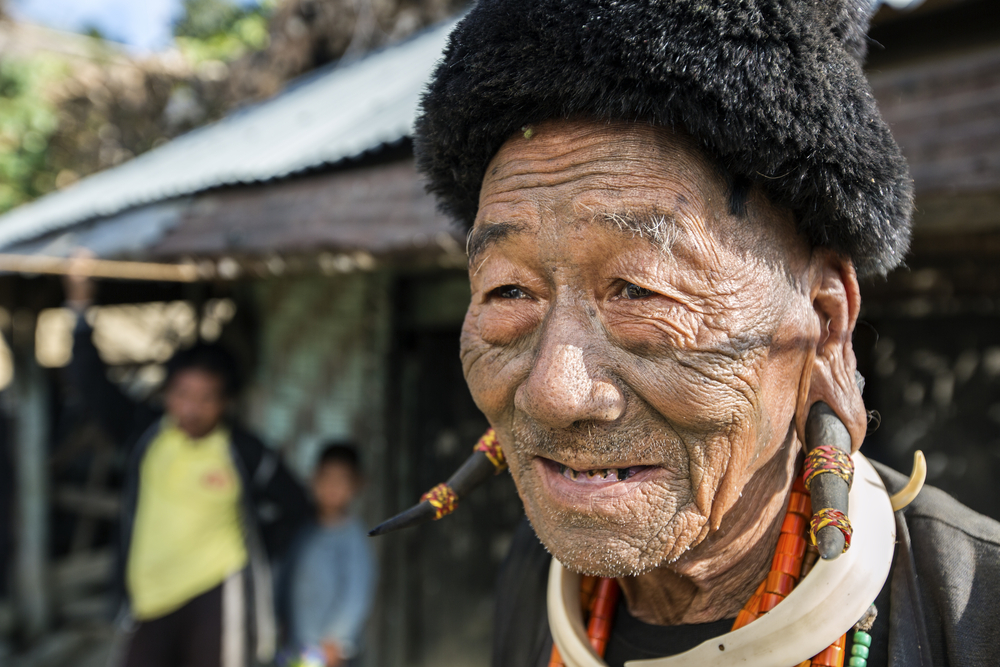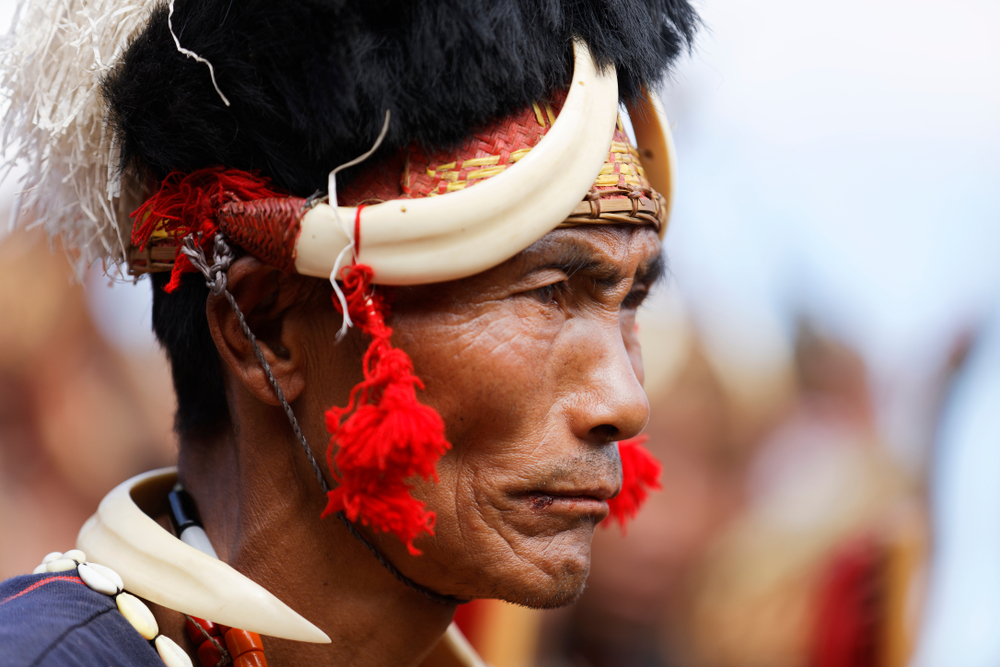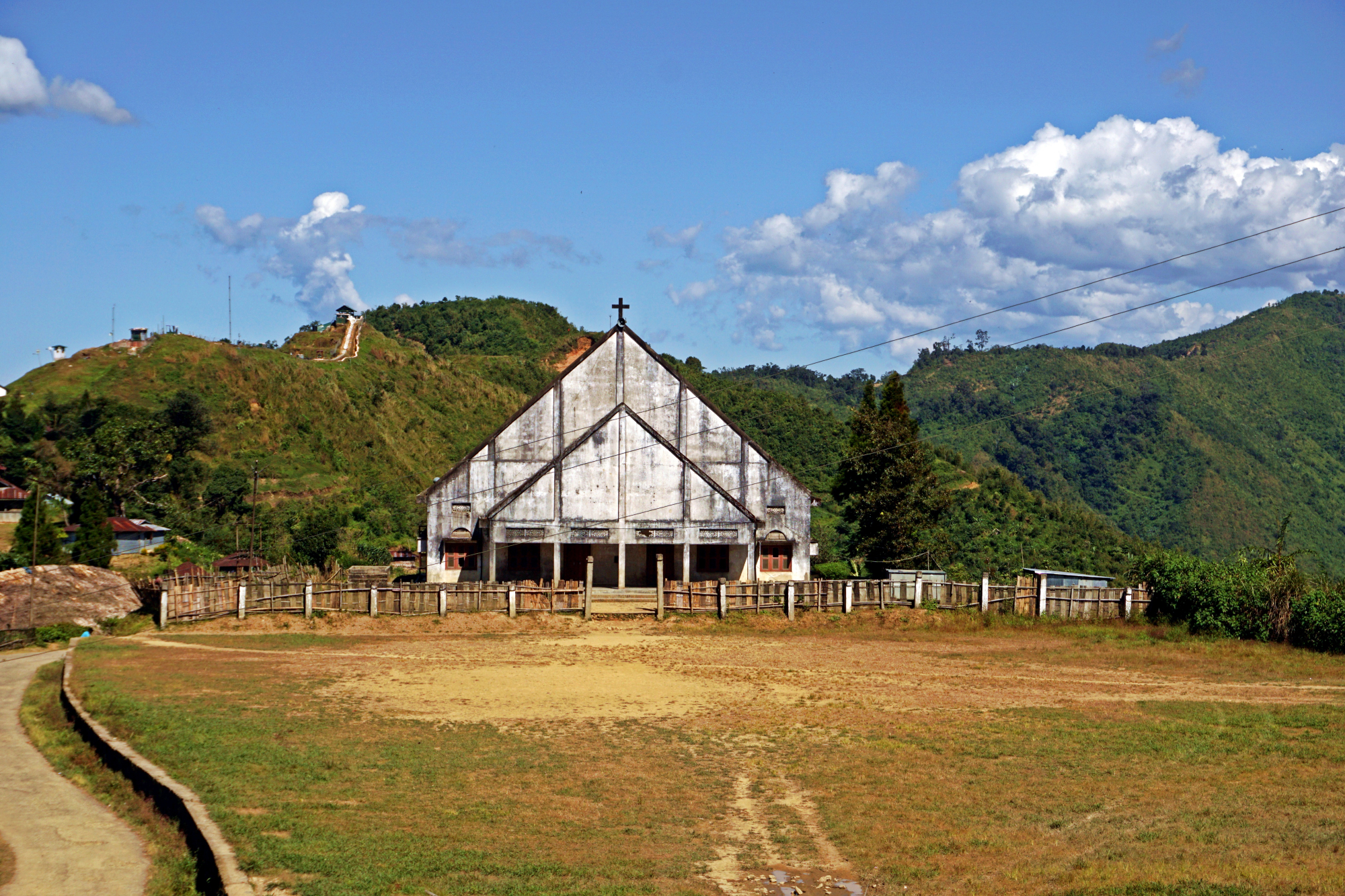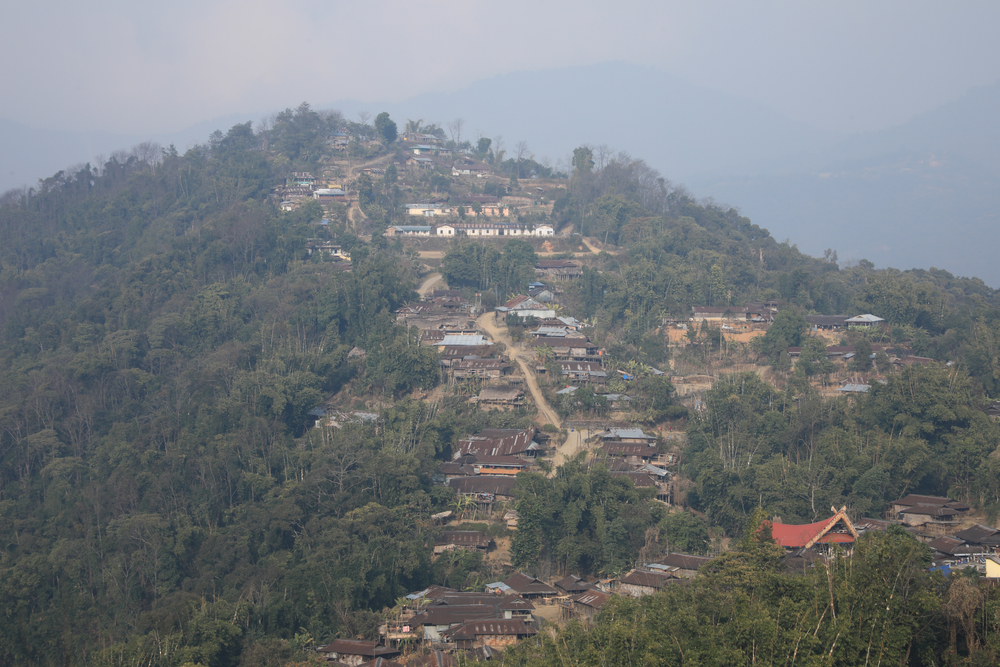India's Last Headhunters
The jungles and hilltops of northeastern India are home to a diverse group of people known as the Naga. The Konyaks are the largest group of Naga, but that isn't why they've captivated the imaginations of travelers worldwide.
Once, the Konyaks were the most feared tribe in the region, achieving notoriety for their striking facial tattoos and chilling tradition of headhunting.
Today, those tattoos are remnants of a way of life that has been abandoned. But the story of the Konyaks is far from over.

Where Do They Live?
The Konyaks are part of India's Naga ethnic group, and live in the northeastern state of Nagaland, in the Mon District. The Mon District is also called "The Land of the Anghs", named for the Konyak chiefs, called Anghs.
How Many Are There?
Of all the Naga tribes, the Konyaks have the biggest population. Living throughout Nagaland and in parts of Myanmar, there are 320,000 Konyaks today.
Their Tattoos
The Konyaks' facial tattoos are their most distinct feature that sets them apart from other Naga—but there's a dark meaning behind those markings. They are earned for taking the head of an enemy. Headhunting was a tradition among all the Naga tribes but the Konyaks were known for their ruthless efficiency when it came to this practice.
Their Jewelry
In addition to facial tattoos, earrings were another common tradition among the Konyaks. Earrings were typically made of animal bones or horns, with warriors wearing goat horns to stretch their ear lobes.
Earrings were such a captivating part of Konyak culture, that it is believed the name of their state, Nagaland, originated from a Burmese word meaning "people with earrings".
Their Traditional Clothing
Bold colors are a distinct feature of traditional Konyak clothing. Men wear a loincloth that is made of animal hide and decorated with feathers and animal hair, while women wear a skirt that it woven of cotton or silk. Brass necklaces, bracelets, and earrings are common adornments for both men and women.
What Are They Known For?
Aside from their distinct tattoos, the Konyaks are also known for their machetes and woodcrafts, and their skills in gunsmithing, iron-smelting, and brass-working. They are also renowned among the Naga for their ability to make gunpowder by boiling urine-soaked soil with charcoal.
 Rwf-art, CC BY-SA 3.0, Wikimedia Commons
Rwf-art, CC BY-SA 3.0, Wikimedia Commons
Headhunters
The Konyak were feared and revered for their headhunting. They would often attack neighboring villages, and take the heads of their enemies as trophies. Konyak warriors showed their power by the number of heads they collected.
Why Did They Collect Heads?
The Konyak believed that people's skulls contained all their life force. When they took a person's head, that life force became linked to fertility and abundance that was believed to bring personal luck or even luck for the entire village.
Why Did They Stop Headhunting?
Life for the Konyaks began to change in the 1870s. That's when Christian missionaries from the British Raj began to convert the Naga tribes through schools that they built. The Konyak were the last of the Naga to resist conversion.
They held on to their traditional way of life until the British made headhunting illegal in 1935. This, combined with conversions to Christianity, caused the tradition to fade out.
 Unknown Author, CC BY 4.0, Wikimedia Commons
Unknown Author, CC BY 4.0, Wikimedia Commons
What Is Their Religion?
Today, most Konyaks practice Christianity. Prior to conversion, the Konyaks practiced animism, and believed in the power of the plants, rocks, and animals around them.
Their Government
Konyak villages are ruled by a king, called the Angh, who was traditionally chosen because he had the biggest display of enemy skulls. Depending on how big the village was, the Angh could have three to six sub-kings who helped govern different parts of the village and reported back to the main king.
The kings could be recognized by the blue beads they wore on their legs, with their level of power being shown by how many layers of beads they wore.
 Yves Picq, CC BY-SA 3.0, Wikimedia Commons
Yves Picq, CC BY-SA 3.0, Wikimedia Commons
Their Festivals
The Konyaks celebrate two important festivals. The first, Aoleang, is held during the first week of April. It is meant to welcome the spring and also gain the blessing of the Almighty, who they call Kahwang, before planting seeds for new crops. The second major festival, Lao Ong Mo, is held in August and September, and celebrated the Konyaks' harvest.
 Dhruba Jyoti Baruah, Shutterstock
Dhruba Jyoti Baruah, Shutterstock
Konyak Marriage Traditions
Traditionally, when it comes to marriage, one is not allowed to marry someone from their tribe. Only Konyak chiefs are exempt from this rule since they are considered to be divine. Marriage ceremonies typically involve a large feast at the bride's house, and a sacrifice of fowl to bless the union.
Before the guests ate, the bride would be served rice and rice beer. After the wedding, it was common for the groom to present the bride's father with a bundle of spears to be shared among the bride's clan.
A Symbol Of Her Commitment
Konyak brides didn't move into their husband's house until several months after the wedding, and that transition was considered to be a special moment in a woman's life. Before leaving to live with her husband, the woman would have her knees and legs tattooed with traditional symbols that were worn only by married women.
Who Does What?
Duties and responsibilities in Konyak communities are based on gender, with men traditionally being hunters and warriors while women take care of the farms and family.
Typically, men make all the major decisions about the village, though in recent years, some communities have adopted more equality when it comes to including women in these decisions.
A Woman's Worth
Despite being a patriarchal society, Konyak women have often occupied a high position in society compared to other ethnic groups in India. Konyak women are known to be hard workers and spend long hours tending to their farms and families.
Important women in the community are often honored during feasts and festivals, with the most revered receiving gifts of paddy fields and land.
The Provider
Konyak men are the head of the household, and they usually own the family home which has been passed down from through the generations from their forefathers. While women do much of the housework and farming, men must make sure the house has proper furnishings and is stocked with baskets and tools for their wives.
What Are Their Houses Like?
Like other Naga tribes, Konyak houses are made of wood, bamboo, and thatch. They have a raised roof that slopes that keep rain from accumulating on the house during heavy rains. A small veranda at the back of the house and a cooking fire in a central location of the house are also common features of Konyak houses.
Reminders Of The Past
Though their days as headhunting warriors have come to an end, the Konyaks still show their fighting spirit in their homes today. It is not uncommon to find rifles or homemade machetes and spears displayed along with animal skulls.
What Do They Eat?
Traditional Konyak cuisine carries the distinct flavor of their local ingredients. Bamboo shoots are a popular ingredient, as are ghost peppers, soybeans, and yams. Fish curry, rice dumplings, and rice pancakes are some of the more common dishes that you'll find in a Konyak village.
The Morung
Once the center of life in all Konyak villages, the Morung is slowly losing its significance in Naga communities. The Morung was a large communal house that was similar to a school. Unmarried men would go to the Morung to learn about their tribe's history and traditions.
Elders would pass on songs and stories, as well as important life skills like wood carving, bamboo weaving, and blacksmithing.
Boys' Club
The Morung was also where young men learned about headhunting, a practice that women didn't not traditionally take part in. Because the Morung was a place for young men to learn about their duties within the tribe, women rarely entered the building.
Stay In School, Kids
In addition to the Morung, there were two other schools: the Baan and the Ywo. The baan was similar to the Murong and was where boys were sent to be educated. Girls attended the Ywo.
Today, many Konyak schools have been influenced by modern society, and boys and girls are both educated in secular institutions.
Room For All
In many Konyak villages, the Morung is usually the largest building, aside from the church. It is built to accommodate large gatherings, and often contains a dormitory for people to spend the night.
Wood carving and animal skulls are typical decorations for the Morung, though in the past, the skulls of defeated enemies were also hung outside this great building.
A New Purpose
Today, Morung are more like community centers or schools. People of both genders gather there to socialize while young boys are taught a more secular education rather than traditional cultural practices.
Birdseye View
The Konyaks traditionally built their villages on hilltops so they could easily monitor the surrounding lands and defend against attacks from enemies. The average elevation of a Konyak village is anywhere between 900 and 1,200 meters (2,952 and 3,937 feet).
A Fortified Position
Konyak villages were heavily guarded, and they were always on the lookout for attack from tribes seeking retribution. Having more than one entrance to the village was common, and those entrances were often booby-trapped for extra protection.
Welcome To Longwa
Longwa Village is the most famous Konyak village because it sits on the border that separates India and Myanmar. In fact, the border cuts right through the Angh's house, which you can visit. The village is home to 6,703 people who can move freely between the two countries, and the Angh rules over 60 other Konyak villages. He also has 60 wives.
Breaking World Records
In 2019, the Konyak dance became the world's largest traditional dance. During the Aoleang festival 4,700 Konyak women from over 115 villages danced and sang while wearing their traditional regalia. They danced for five minutes and two seconds, setting a new Guiness World Record.
Final Thoughts
Though the Konyaks have changed much since their days as headhunters, holding on to their cultural traditions and way of life is more important now than ever. The modern world is always seeking to change and assimilate indigenous peoples, but the Konyaks have proven that it is possible to retain traditional cultural practices in the face of change. Their legacy is one of resilience, and an enduring testament to their warrior spirit.

